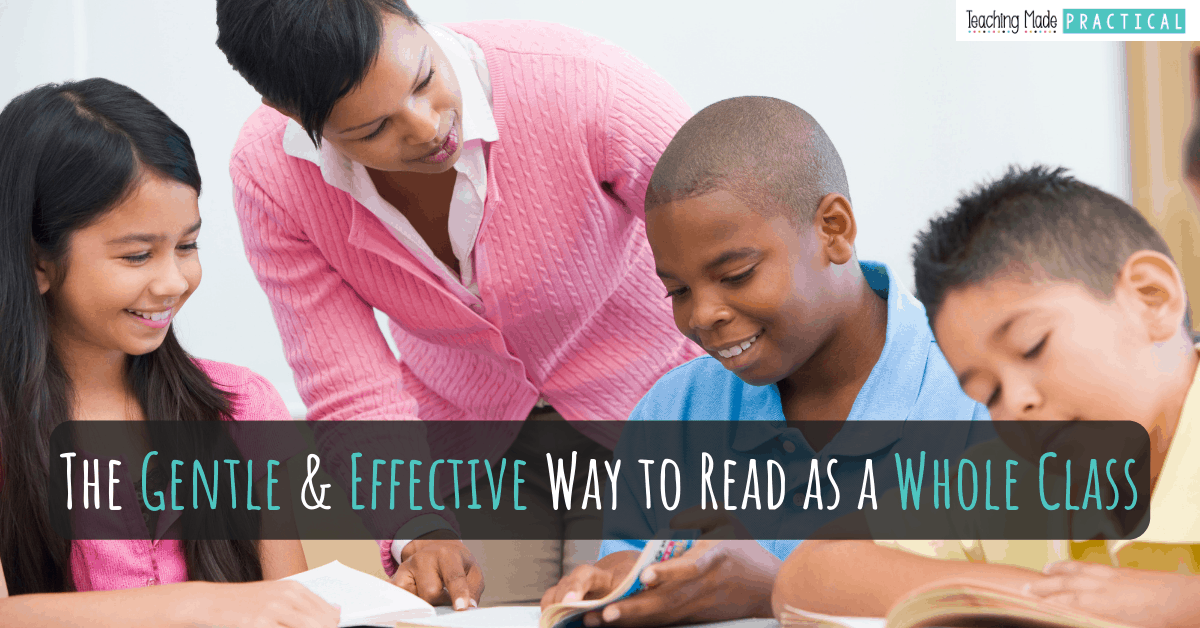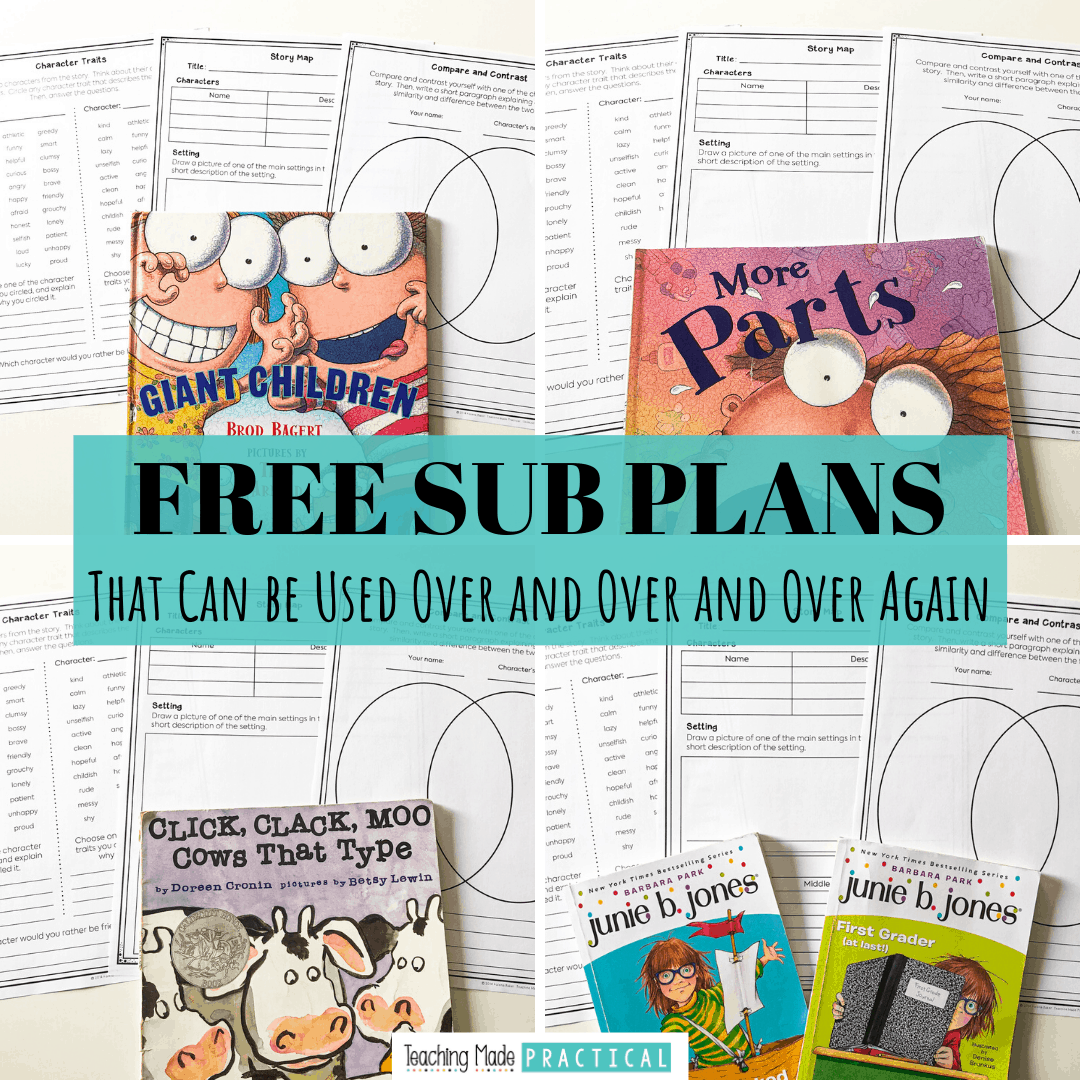
Sometimes whole class reading of a text together is necessary, but as teachers we worry that it might not be the best use of our limited time. It is easy for 3rd grade, 4th grade, and 5th grade students’ minds to wander, and it hard to hold them accountable for following along in a way that doesn’t shame students.
In the past, round robin reading (where students read a short section of the text aloud one at a time) has been used as a method for holding students accountable for reading together with the entire class. However, research has shown that round robin reading is ineffective and even counterproductive to our goals.
There are a lot of better whole class reading strategies out there – choral reading or echo reading, for example. However, these can be more time consuming. So how can we read a text together, with the entire class, while making every student is getting the most out of it as possible – building fluency, decoding, and comprehension skills while reading – and not use up all of our valuable class time?
Fill In the Blank - Whole Class Reading
My favorite whole class reading strategy is what I called “Fill in the Blank” reading. With this method, I would read the text aloud while students followed along in their heads. As I was reading, I would often pause, and my 3rd grade students would say the next word aloud. Then I would continue reading, pausing at a new word later on. So simple, yet so powerful.
This accomplished several things that round robin reading never could as effectively:
- Students heard good fluency modeled. (You can also use this no prep activity to get students some extra fluency practice.)
- We didn’t have to spend as much time actually reading the text, as I read much more quickly than students and transitions were minimized.
- Even though students were not reading very many words aloud, they were still building fluency and decoding skills as they followed along with their eyes.
- I could easily include think alouds and ask questions as we read.
- No student was shamed or embarrassed.
- It kept my faster readers engaged (since they were following along with me instead of a slower peer) and provided scaffolding for my struggling readers who would never be able to read the text independently.
I used this whole class reading instruction method regularly in my class - and not just during our reading block. I would use this if I was going over a PowerPoint presentation, or reading the instructions to an experiment, or going over a test, or reading a word problem.
This helped keep students reading as much as possible instead of just listening to me.
Take the classroom outdoors with these fun outdoor scavenger hunts that cover a variety of skills. The 8 scavenger hunts include:
- 5 senses scavenger hunt
- nouns and adjectives hunt
- math review
- living and nonliving
- syllable sort
- ...and more!
Get 8 scavenger hunts for $2.00 and enjoy some sunshine with your students!
Holding Students Accountable with This Round Robin Reading Alternative
It can be easy for students not to participate with this "fill in the blank" method with your class, defeating the whole purpose. To prevent this from happening, I used a simple, non-shaming way of holding students accountable.
I originally started by asking students to follow along with their fingers. This way, I could easily see whether students were following along as I walked around the classroom. However, this seemed too laborious and unnatural for me.
Instead, I would walk around the classroom as we were reading together. When I tapped a student on the shoulder, the student was expected to quietly point at where we were in the text. This would help me confirm that they were actually following along with their eyes.
If a student was unable to point out where we were in the text, I would help them out. That student knew I would come back to them later.
Usually, that was enough. As the year progressed and I knew my third graders better, I knew which ones needed to be held more accountable and which ones didn't.
If a student was repeatedly unable to follow along, this was usually a clue for me that something else was going on in their lives. I would try to talk to them one on one later and give them a chance to share.
One year, I had a student who was simply incapable of following along because she was so far behind in her reading skills (she still didn't know all her letters and sounds), so I differentiated for her in other ways. Generally, however, all of my students were able to keep up with me and follow along with their eyes, even if they were a couple of grade levels behind.
Other Tips For Using This Instructional Strategy
You can use this "fill in the blank" whole class reading strategy alongside other methods like choral reading and echo reading. Have students echo read a sentence when you want them to practice reading with expression, or have them choral read a sentence with an important vocabulary word in it. Find more engaging alternatives to round robin here.
You can also use this instructional method to partner up your more advanced students with students that need more scaffolding. After your students have seen this strategy modeled, it is easy for them to imitate. Partner up students and have the advanced students be the "teacher" and pause every now and then for the student that requires more scaffolding to "fill in the blank." Find more tips on utilizing partner reading in your class here.
3rd, 4th, and 5th grade students can learn a lot by just following along with their eyes - That is how my parents taught me to read! Of course, it doesn't replace intentional, well thought out phonics and phonemic awareness instruction.
You might like some of these other ways to provide scaffolding to your upper elementary students.
Never Stress Over Sub Plans Again!

Make copies, find a fiction book, and you'll be ready for any emergency that comes your way!



Comments 5
Great info.
I have used this method and students love it. I just wonder about comprehension. Do you feel like they are able to have solid comprehension skills with this method or is this best for fluency? I wonder about them focusing so much on which word they will fill in-on the words themselves as words only- and not really pay attention to the meaning of the text itself. What are your thoughts?
Author
That’s a great question! I have no research to back it up, but what I observed in my students is that it was good for both comprehension and fluency. The only exception would be for my students well below grade level that struggled to keep up – but comprehension would have been a struggle for them for any grade level text. Since this was used so regularly in my classroom and students were never embarrassed using this method, I didn’t see students focusing on what words they were going to fill in. It just gave them a reason to follow along and not get distracted. I would be curious what other teachers thought, though!
Sub plans look great please send
Author
You can sign up for the free sub plans here! . Let me know if you have any problems signing up.